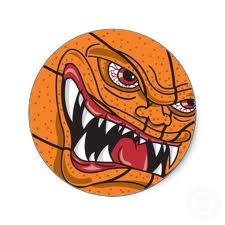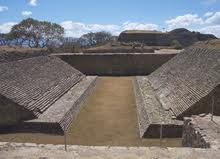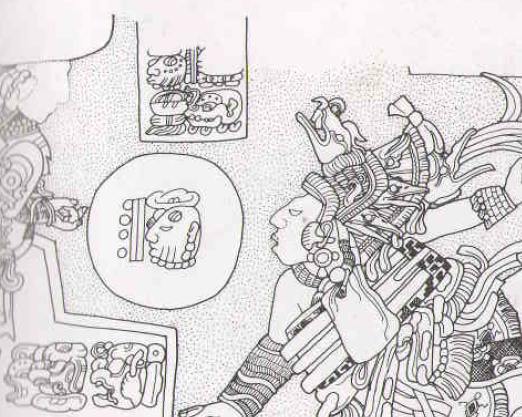Death By Basketball April 6, 2013
Author: Beach Combing | in : Ancient, Medieval , trackbackHumanity is extraordinarily ingenious in terms of the different ways it has found to execute people. We’ve reviewed on this blog before elephant executions; Mike Dash has recently given space to the Viking’s blood eagle; there is necklacing in Sub-Saharan Africa (a lynching rather than judicial capital punishment); the brazen bull in ancient Greece (another post another day); and the Romans developed an interesting sentence involving a sack, a patricide, a cliff and a rooster. But what about death by basketball… We refer here, of course, to the famous ‘ball games’ of pre-Columbian ‘Central’ America: the b-gs were played as far south as Columbia and as far north as the south-west of the US. Before describing how individuals were executed there though it might be worth actually establishing what the rules of this game were. And here we run into the problem that has bedevilled this field of studies since it began: no one really knows. True, there are a number of steles that show ancient Mayans and Aztecs playing the b-g. True, too, there are myths – some of which were written down – that include references to b-gs: one particular is quite detailed. There are also some early colonial descriptions of the game: a group of South American ball-players even toured Europe in the sixteenth century. Finally, there are some traditional b-gs played today that allegedly bear a relation to the game once played in jaguar and bird suits in the fourteenth-century.
From these we can glean a handful of the rules of the bloodiest game in history: remembering, of course, that the game will have varied greatly across the thousand of miles of America in which it was enjoyed. First, the the b-g was typically played in a long court (pictured below) with sloping sides and walls. Second, the b-g began with a rubber bouncy ball being suspended over the court (how?) and dropped into play from a great height. Third, points were scored by putting a ball through a wall ring; by touching the ring and perhaps associated wall markers; and, it has been suggested, by getting a ball into the right area of the court. Fourth, players could use all parts of their bodies to manipulate and move the ball apart from their hands: hips, knees, feet even the head (?), yes; fingers and palms, no. Fifth, there seem to have been three or four players per side. Sixth, not all games ended in sacrifice and death: that was only for special occasions.
So how do you get from bouncing balls off your torso to killing captured enemy kings (the sacrifice or execution of choice in the ball game)? The typical answer found in tens of books and many more websites is that the winning side was sacrificed. This gives a pleasant twist to our expectations of winning and losing: we have the ball-players fighting desperately for the honour of having their still beating heart removed from their bodies. Beach, though, suspects this is cobblers: he has been able to find no satisfactory proof for it, though he would love to be corrected: drbeachcombing AT yahoo DOT com.
In fact, the losers were sacrificed and the losers were captured enemies and sometimes captured royals. How do you guarantee that the captured are on the losing side? Scholars have been able to find no answer to this. One possibility is that captives played against captives: so there is a kind of Hunger Games/Battle Royale thing going on. But, again, there does not seem to be any proof of this. In fact, sometimes we know that ruling kings played against captured kings and there is no record of a ruling king losing. The game must have been, in some way, stacked against the captives. Possibly the victims-to-be were sent out into the field against the king and three or four crack players. Perhaps the captives had been starved, perhaps they had lost blood from torture and fertility rites, perhaps they lacked the necessary equipment to play properly (see below)? Or maybe only the matches where they lost were recorded? In that case by winning they had the right to play again and again until…
It was, in any case, the victims lot to be sacrificed off court after the game: it is suggested in the temple room at the height of the pyramid. But something that is not commonly appreciated is that some of the captives in question may have been sacrificed on court during the game. Consider this. The ball in the b-g was made of solid rubber and was as big as a rolled up rabbit (we get this from a mythical source…) or a human head (in fact, decapitated human heads coated with rubber may sometimes have been used). It is estimated that these balls would have weighed as much as eight pounds (3.5 kilos), about seven times more than a basket ball. If you have ever been hit in the face by a basketball you will know about pain. Imagine a ball weighing eight times that, made of rubber with a demonic natural bounce, hurtling towards you. If it hit your head it could knock you out or conceivably kill you. If it caught an unprotected part of the body it would bruise you and broken bones could easily result. In fact, ball players normally wore plenty of protective clothing, including a ‘yoke’ around their chest and pillows on their limbs to avoid this. Perhaps prisoners were not given the protective outfits: they certainly seem to have been dressed differently looking at various stele? Perhaps hitting, hurting and better still disabling your opponent, even in a normal non-killing game, was part of the excitement of the sport?
That some opponents may have come off the court on a stretcher or even dead is hinted at by one stele from the Maya (probably Heye) where a ball is travelling rapidly into the face of a captive directed by his opponent: one of the two players shown is a king according to the associated script. Think three and a half kilo bags of sugar, packed tightly together and directed at velocity towards your nose. You would not be walking away. You might never walk again. There are other stele that show winners decapitating losers and there are some that seem to suggest (as noted above) that heads could be used as balls (see again the illustration here and the skull within the ball). It is possible that this faffing around with knives and heads took place not up the steps of the temple afterwards but in the midst of play. ‘OK send on a substitute, they’ve just hacked the head off our playmaker…’
***
7 April 2013: First up is Ball-Player who has some corrections: Beach, a couple of points where I think you could have been more exact. First points were also possibly gained if your opponent missed a high shot; second a ring shot seems to have been so valuable that the game was practically over if you managed it; third, you got points if your opponent failed to stop the ball going out or if you held possession for a certain number of bounces. You say that you could used all your body but not your hands. In some version of the ball-game you could use sticks or holders, but the classic game seems to have involved only the hips and below: even the torso and head were out, perhaps because of your point about the damage a ball could do! The ball would have been considerably lighter if there was a skull within the rubber: having said that the balls so far found don’t have a skull inside. Final point there seem to have been different numbers on teams. It was even possible, apparently, to play one against one. Of course, as you note we are talking about a long time and a vast geographical area. Over that space anything was possible and rules would have changed.’ Norm, meanwhile, writes: I went down for the new year celebrations for the Maya new year this past December. Linda and I rented a car out of Antigua Guatemala and drove to Mixco Viejo for the event. They put on a ball game the afternoon before the ceremonies, it looked a bit like crab soccer. We visited a good number of ruins on this past trip, many of the off the beaten track type places. Something I noticed about the ruins was that it looked like there were many different kinds of sport played. Palenque and Tonina in Chiapas State Mexico had several different kinds of what looked like sports fields and arenas. Tonina was set up for a vast field game where hundreds could play with seating for thousands of spectators. Most of the ruins I visited on this last trip had what looked for all the world like fighting pits, areas 10 meters by ten meters with seating all around. Chacmultun in Yucatan State Mexico had a playing field of around two hundred acres that had viewing platforms on three sides, it also had the standard ball court and what I would call fighting pits. It seems to me and it is just a guess from my own observations, that these cities in some cases were sports centers, places that held sporting events as a matter of specialty. The specialty concept held over to other things as well. Yaxchilan on the Rio Usumacinta looked to be a trading center, it had a gate on the river front that looked like a toll booth if I ever saw one. Uaxactun, north of the great city of Tikal in Guatemala looked like a place where people went on trial. Uaxactun had the look of a place where you went to settle differences short of war. Thanks BP and Norm.
28 Oct 2016: Norm adds to earlier impressions (loved the 20,000 Iroquois): I suspect that the Maya played field games. The ruins Chacmultun and Dzibanche have vast fields between three “goal” type buildings. Dzibanche’s field is something north of three thousand acres, the field at Chacmultun something like a few hundred but they are set up the same. The fields would be planted in corn most of the time but used for games during the dry season. New York’s Iroquois played a ball game that involved up to 20,000 participants,on their fallow corn fields. Many of the Maya courtyards are set up like stadiums, with seats set up where one can sit and still other watchers can come and go on what is left of the seating area. The ruin Edzna has one building that is two sided, one side set up to watch the Maya side of the courtyard and opposite side set up to watch things going on in an area with a decided central mexico style look. The top has VIP boxes running down the top. There are a few Maya ruins that look to be only for ceremony, the majority look to me to be as much about sport as anything. This comes from only one source: standing in a ruin and asking one’s self ” What was this space used for?”





